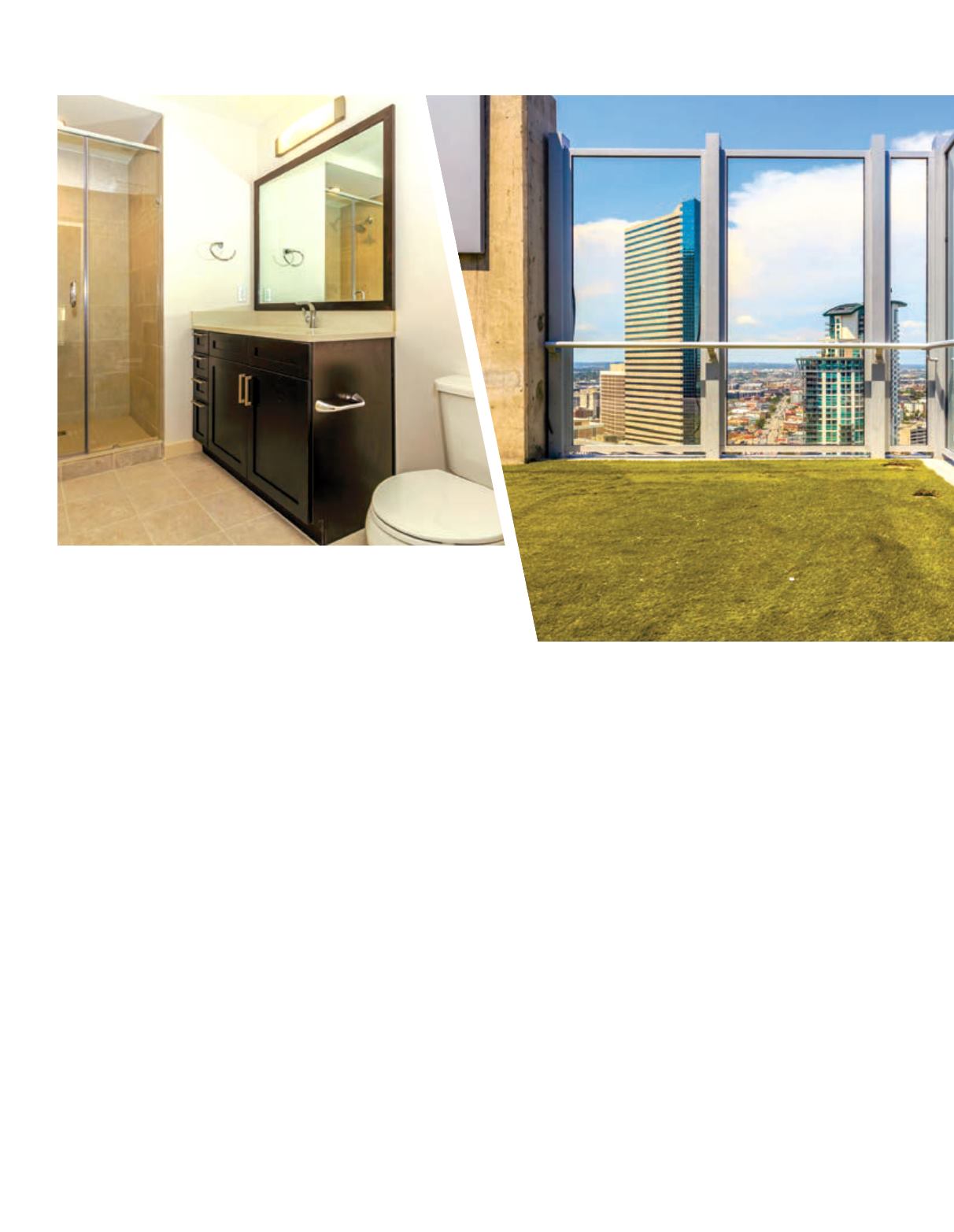
108
/ BUILDING DIALOGUE / SEPTEMBER 2016
apartments, accompanied by 484 structured parking spaces,
and 6,900 square feet of street-side retail. SkyHouse’s name-
sake amenity is the resort-style rooftop clubhouse boasting
a pool and deck, outdoor kitchen and seating areas, fireplac-
es, grills and TVs as well as an internal lounge featuring a
demonstration kitchen and billiards room. SkyHouse Den-
ver is actually the 14th SkyHouse to be completed in the
United States by developer Novare Group and presents a
well-established model of amenitized urban living target-
ing next-gen professionals. Since the SkyHouse’s design had
already been built by previous Novare and Batson-Cook
teams in other markets, the objective for the Batson-Cook/
Swinerton joint venture was to build upon lessons learned
and integrate local knowledge, while the rigorous schedule
drove the project.
“There were two roads on the schedule, the overall struc-
ture and the build-out of the interior,” says Peter Martin,
Batson-Cook project manager, who works in tandem with
Lulay and a team of five superintendents to oversee the
project. Martin notes a process called pull planning as an
indispensable Lean strategy designed to ensure the team of
experts supervising the work collaboratively develop a se-
quence of activities that works to everyone’s advantage. Rel-
ative to the overall structure, SkyHouse’s 14,500-square-foot
floor plates were broken down into three sections so each
floor could be poured in just three days. Martin and Lulay
guided all 26 stories of structural construction from founda-
tions to topping out in just 200 calendar days.
“For the interiors, we took a production mindset as well,”
continues Martin. “The interiors schedule was built on a
four-day sequence for finishes, starting with paint, and con-
tinuing with cabinetry, countertops and tile.” With each typ-
ical floor having a combination of studio, one- and two-bed-
room apartments, both Martin and Lulay acknowledge the
participation and buy-in from all trades was essential to
achieve the rigorous production schedule.
While much of the work in meeting the schedule was in
fine-tuning processes established on the previous SkyHouse
projects, a major change in the building plan for SkyHouse
Denver was to move away from a precast parking struc-
ture. When the initial cost models and pricing indicated
that precast costs in the Denver market would jeopardize
the budget, the decision was made to build the garage cast-
in-place. The longer schedule of cast-in-place construction
compelled the team to split the structure into two halves
that could be built simultaneously. This allowed the team
to expedite construction on elevators and interior finish-
es, both of which were extensive on the north half of the
building. This took a full three months off of the garage
schedule and allowed it to be completed in line with the
tower.
While speed to market was the driving force behind the
project’s schedule, logistically there were also quite a few
variables intertwined in working with the city and ad-
jacent business interests. As a starting point, a significant
volume of the building’s construction materials had to be
warehoused elsewhere and brought to the site in a just-in-
time delivery since staging space was severely limited. Also,
/ Built for Speed /


